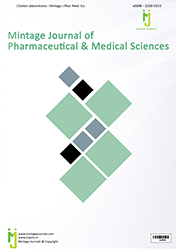PHARMACOLOGY AND MECHANISM OF ACTION OF DIGITOXIN
Commentary - (2023) Volume 12, Issue 2
Abstract
Description
Digitoxin is a potent cardiac glycoside derived from the Digitalis purpurea plant, commonly known as foxglove. It has been used for centuries to treat heart conditions, particularly congestive heart failure and atrial fibrillation. In modern medicine, digitoxin remains a valuable therapeutic agent due to its ability to strengthen the heart’s contractions and regulate heart rhythm. In this article, we delve into the pharmacology of digitoxin, its mechanisms of action, therapeutic uses, and potential side effects.
The primary pharmacological action of digitoxin is its positive inotropic effect on the heart. It works by inhibiting the sodium-potassium adenosine triphos- phatase pump, also known as the sodium-potassium pump or sodium pump. This enzyme is responsible for maintaining the proper balance of sodium and potassium ions inside and outside cardiac cells. By inhibiting the sodium pump, digitoxin increases the intracellular concentration of sodium ions, lead- ing to an increase in intracellular calcium levels.
Elevated intracellular calcium levels enhance the contractility of cardiac mus- cle cells, resulting in stronger and more efficient contractions of the heart. This effect is beneficial in treating heart failure, as it improves the heart’s pumping capacity, leading to increased cardiac output and better circulation of blood throughout the body.
Digitoxin has historically been used to treat various heart conditions, espe- cially congestive heart failure and atrial fibrillation. In congestive heart failure, the heart’s pumping ability is impaired, leading to inadequate blood circulation and fluid accumulation in the lungs and other tissues. Digitoxin helps alleviate these symptoms by strengthening the heart’s contractions and improving its efficiency.
In atrial fibrillation, the heart’s electrical signals become chaotic, causing ir- regular and rapid heartbeats. Digitoxin helps normalize the heart’s rhythm and control the heart rate in patients with this condition. Digitoxin is absorbed from the gastrointestinal tract after oral administration and undergoes metab- olism in the liver. The drug is eliminated mainly through the liver and excreted in the bile. Due to its relatively long elimination half-life, digitoxin requires careful dosing and monitoring to avoid toxicity. While digitoxin is effective in treating heart conditions, it has a narrow therapeutic window, meaning the difference between a therapeutic dose and a toxic dose is small. Therefore, close monitoring of patients taking digitoxin is crucial to prevent toxicity.
The most common side effects of digitoxin include nausea, vomiting, loss of appetite, and visual disturbances. In cases of toxicity, patients may ex- perience more severe symptoms, such as arrhythmias, confusion, and even life-threatening cardiac effects. Patients with impaired renal or liver function, electrolyte imbalances, or taking certain medications that can interact with digitoxin are at increased risk of toxicity. Therefore, careful consideration of potential drug interactions and patient-specific factors is essential when pre- scribing digitoxin.
Digitoxin remains an important therapeutic agent in the management of heart conditions, particularly congestive heart failure and atrial fibrillation. Its pos- itive inotropic effect on the heart strengthens cardiac contractions and helps regulate heart rhythm, leading to improved heart function. However, due to its narrow therapeutic window, digitoxin requires cautious dosing and close mon- itoring to avoid toxicity. As with all medications, healthcare providers must carefully assess each patient’s medical history and consider potential drug interactions to ensure safe and effective use of digitoxin in the treatment of heart conditions.
Acknowledgement
The authors are very thankful and honoured to publish this article in the re- spective Journal and are also very great full to the reviewers for their positive response to this article publication.
Conflict Of Interest
We have no conflict of interests to disclose and the manuscript has been read and approved by all named authors.
Author Info
Perry Thomas*Received: 30-May-2023, Manuscript No. mjpms-23-108290; , Pre QC No. mjpms-23-108290(PQ); Editor assigned: 01-Jun-2023, Pre QC No. mjpms-23-108290(PQ); Reviewed: 15-Jun-2023, QC No. mjpms-23-108290; Revised: 20-Jun-2023, Manuscript No. mjpms-23-108290(R); Published: 27-Jun-2023, DOI: 10.4303/mjpms/236045
Copyright:

ISSN: 2320-3315
ICV :81.58

